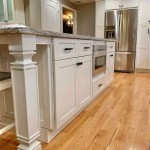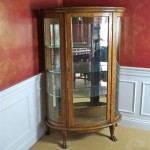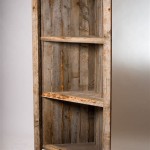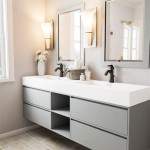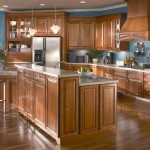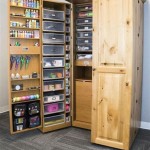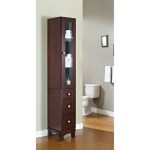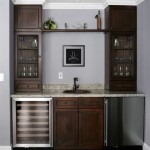The Enduring Beauty of Built-In China Cabinets in Chinese Interiors
Built-in china cabinets represent a significant element of traditional and contemporary Chinese interior design. These cabinets are more than just storage solutions; they are architectural features that contribute to the overall aesthetic, functionality, and cultural significance of the living space. Their enduring appeal stems from their ability to seamlessly integrate with the structure of the home, offering both practical storage and a display area for prized possessions, especially delicate porcelain, teacups, and other decorative items.
The history of built-in furniture in China can be traced back centuries, with early examples found in imperial palaces and wealthy households. These early cabinets were often crafted from precious hardwoods like rosewood or ebony, adorned with intricate carvings and lacquer finishes. Over time, the design and materials evolved, adapting to changing tastes and lifestyles, but the fundamental concept of the built-in cabinet as an integral part of the architecture remained constant.
Modern Chinese homes often incorporate built-in china cabinets as a way to bridge the gap between tradition and modernity. While the traditional designs emphasized elaborate ornamentation, contemporary designs may favour cleaner lines, minimalist aesthetics, and the incorporation of modern materials like glass, metal, and engineered wood. However, the underlying principle remains the same: to create a functional and visually appealing storage solution that complements the overall design of the room.
Space Optimization and Architectural Integration
One of the primary advantages of a built-in china cabinet is its ability to optimize space within a room. Unlike freestanding furniture, which can often feel bulky and take up valuable floor space, built-in cabinets are designed to seamlessly integrate with the architecture of the room. They are typically recessed into walls, effectively utilizing otherwise unused space and creating a more streamlined and uncluttered appearance.
The architectural integration of a built-in china cabinet allows for a more cohesive and harmonious design. The cabinet becomes an inherent part of the room's structure, rather than an afterthought. This integration can be achieved in various ways, such as incorporating the cabinet into an existing alcove or designing it as a custom feature during the construction or renovation process. The goal is to create a seamless transition between the cabinet and the surrounding walls, so that it appears to be an original and integral part of the room.
Furthermore, built-in cabinets can be customized to fit specific dimensions and architectural features, such as sloped ceilings, awkward corners, or irregular wall shapes. This customization ensures that the cabinet maximizes the available space and blends seamlessly with the existing architecture. In smaller homes, a well-designed built-in china cabinet can be particularly valuable as it provides ample storage without sacrificing valuable floor space.
In addition to space optimization, built-in cabinets can also contribute to the overall flow and functionality of a room. By strategically placing the cabinet in a high-traffic area, it can serve as a visual anchor and help to define the space. The cabinet can also be used to create a focal point in the room, drawing the eye and adding visual interest to the design. Furthermore, the cabinet can be designed with specific storage needs in mind, such as dedicated shelves for delicate china, compartments for silverware, and drawers for linens.
Aesthetic Considerations and Design Versatility
The aesthetic appeal of a built-in china cabinet lies in its ability to enhance the overall design of a room. They can be designed in a variety of styles, from traditional Chinese motifs to modern minimalist designs, ensuring that they complement the existing décor and reflect the homeowner's individual tastes. The choice of materials, finishes, and hardware can significantly impact the overall look of the cabinet, allowing for a high degree of personalization.
Traditional Chinese built-in china cabinets often feature intricate carvings, lacquer finishes, and decorative hardware, such as brass hinges and handles. These cabinets are typically crafted from hardwoods like rosewood or ebony and are designed to showcase the beauty of the natural wood grain. The carvings often depict traditional Chinese symbols and motifs, such as dragons, phoenixes, and auspicious flowers, adding a cultural and artistic dimension to the design.
Contemporary designs, on the other hand, tend to favour cleaner lines, simpler forms, and the use of modern materials. Glass shelves and doors are common features in contemporary built-in china cabinets, allowing for optimal display of the contents. Metal accents, such as stainless steel or brushed nickel, can add a touch of modernity and sophistication. The finishes may range from natural wood tones to painted surfaces, depending on the desired aesthetic.
The design versatility of built-in china cabinets also extends to their functionality. They can be designed with specific storage needs in mind, such as adjustable shelves for displaying items of varying sizes, drawers for storing silverware and linens, and lighting to highlight the contents. Built-in lighting can significantly enhance the visual appeal of the cabinet, creating a warm and inviting atmosphere in the room. Furthermore, the cabinet can be designed with hidden compartments or features, such as pull-out shelves or rotating displays, adding an element of surprise and functionality.
The color palette of a built-in china cabinet is another important aesthetic consideration. Traditional Chinese designs often utilize rich, warm colors like red, gold, and black, which are associated with good fortune and prosperity. Contemporary designs may favour more neutral colors, such as white, gray, or beige, which can create a more calming and minimalist aesthetic. The choice of color should complement the existing décor of the room and reflect the homeowner's personal preferences. The backdrop inside the cabinet can also play a crucial decorative role. For instance, using a patterned wallpaper or a contrasting paint color can make displayed items stand out more.
Cultural Significance and Display Functionality
Beyond their aesthetic and functional aspects, built-in china cabinets often hold cultural significance within Chinese households. They serve as a display area for cherished possessions, such as family heirlooms, antique porcelain, and other decorative items that are passed down through generations.
The act of displaying these items in a built-in china cabinet is a way to honor the family's history and traditions. The cabinet becomes a visual representation of the family's cultural heritage and a reminder of the values and beliefs that are important to them. The items displayed may include antique vases, teacups, and other porcelain items that have been carefully preserved and passed down through the generations. These items often hold sentimental value and serve as a tangible connection to the family's past.
The arrangement of the items within the china cabinet is also an important aspect of the cultural significance. The items are typically arranged in a way that is both visually appealing and representative of the family's values. For example, a family that values harmony and balance may arrange the items in a symmetrical pattern, while a family that values creativity and individuality may arrange them in a more eclectic manner. The arrangement of the items is often a reflection of the family's personality and their approach to life.
Furthermore, built-in china cabinets can also serve as a platform for showcasing personal achievements or interests. For example, a family that is passionate about art may display paintings, sculptures, or other artistic creations in the cabinet. A family that is interested in travel may display souvenirs and artifacts from their travels. The cabinet becomes a reflection of the family's unique identity and their passions in life.
The display functionality of built-in china cabinets extends beyond simply showcasing items. They can also be used to create a focal point in the room, drawing the eye and adding visual interest to the design. The items displayed can be arranged in a way that creates a sense of depth and dimension, adding visual appeal to the room. Furthermore, the cabinet can be used to create a sense of warmth and hospitality, welcoming guests and making them feel at home. The proper use of lighting within the cabinet can enhance this effect, casting a warm glow on the displayed items and creating a welcoming atmosphere.

Dated Oak China Cabinet Makeover Average But Inspired

Built Cabinets Back Closet Factory

Dated Oak China Cabinet Makeover Average But Inspired

Office Storage Hutch Makeover Love Grows Wild

Custom Built In China Cabinets Toronto Gta 1benmu

Trending Dining Room Built Ins Nikki S Plate

Diy China Cabinet Makeover Steps With Pics Joyful Derivatives

White China Cabinet Makeovers The Resplendent Home

Ideas For Dining Room Built Ins Marissa Cal Home

30 Delightful Dining Room Hutches And China Cabinets
Related Posts

